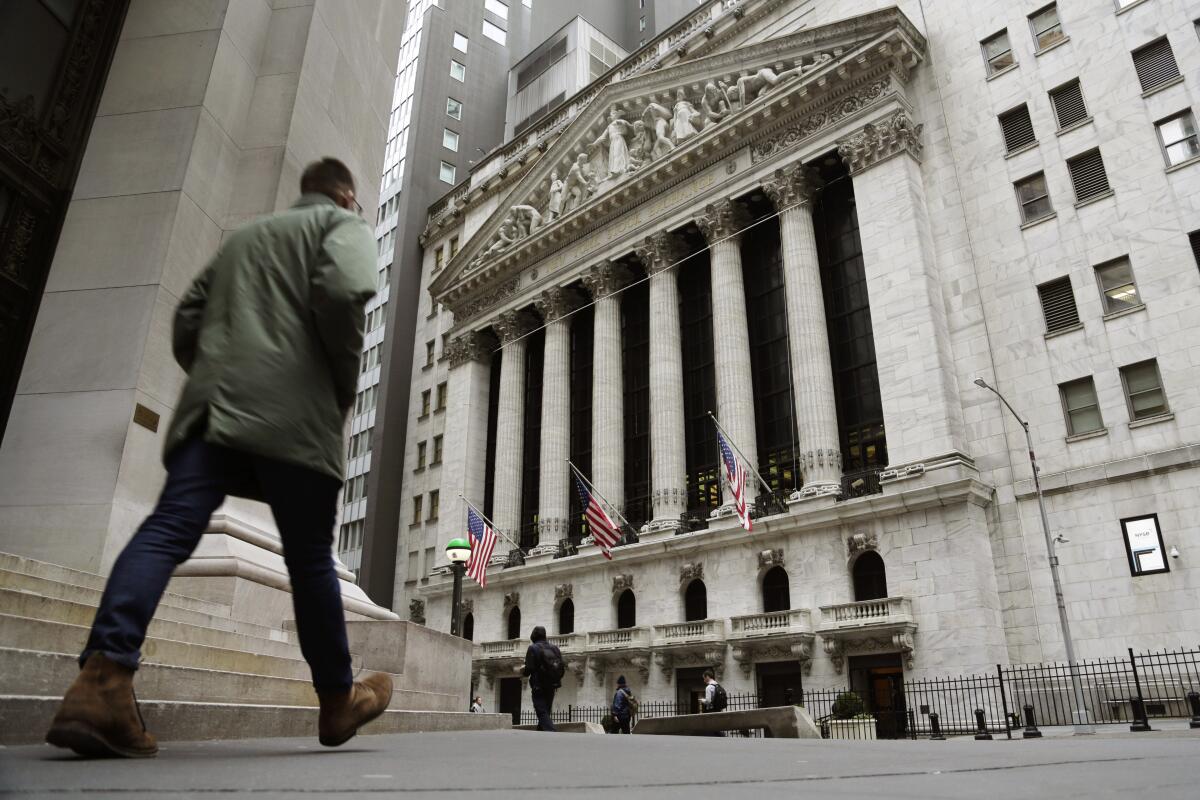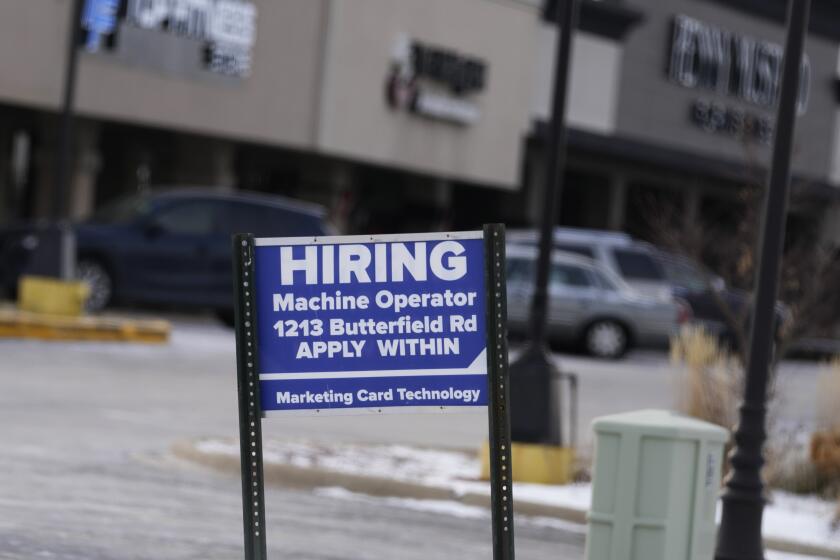Wall Street slips following latest signs of slowing economy

- Share via
Stocks on Wall Street mostly slipped on Wednesday after the latest signals that the U.S. economy is slowing under the weight of much higher interest rates.
The Standard & Poor’s 500 index fell 10.22 points, or 0.2%, to 4,090.38, a day after it broke a four-day winning streak. The Dow Jones industrial average rose 80.34 points, or 0.2%, to 33,482.72 and the Nasdaq composite dropped 129.47 points, or 1.1%, to 11,996.86.
Yields also fell in the bond market after weaker-than-expected reports on the health of U.S. services industries and the job market. They’re the latest signs that the economy is slowing after a feverish set of hikes to interest rates by the Federal Reserve meant to get inflation under control.
One report from the Institute for Supply Management said that growth in the U.S. services sector slowed last month by more than economists expected, as the pace of new orders cooled. A separate report suggested that private employers added 145,000 jobs in March, down by close to half from February’s number. Perhaps of greater interest to markets, pay raises also slowed for workers, according to the ADP Research Institute.
“Our March payroll data is one of several signals that the economy is slowing,” said Nela Richardson, chief economist at ADP. “Employers are pulling back from a year of strong hiring, and pay growth, after a three-month plateau, is inching down.”
Higher interest rates can undercut inflation, but only by slowing the entire economy with a blunt hammer. The hope is that the Fed can pull off the tricky balancing act of slowing the economy and job market just enough to stamp out high inflation, but not so much that it causes a recession. The Fed has hiked rates over the last year at the fastest pace in decades.
U.S. job openings slipped to 9.9 million in February, the fewest since May 2021 and a sign that the job market may be starting to cool.
ADP’s private payroll report could offer a sneak preview of what Friday’s more comprehensive jobs report from the U.S. government will show. Economists expect it to say that employers added 240,000 jobs last month, down from 311,000 in February.
If the job market really is slowing from the strong growth that’s helped to prop up the larger economy recently, it could offer the Fed reason to pause on its hikes to interest rates.
That’s a big deal for markets not only because it could lessen the odds of an upcoming recession, which some economists already see as a high probability, but also because higher rates drag on prices for stocks, bonds and other investments.
Other reports on the economy this week also came in weaker than expected, including readings on the number of job openings across the country and the health of the manufacturing sector.
The reports have traders increasing bets for the Fed to hold rates steady at its next meeting in May, which would be the first time that’s happened in more than a year. Many traders are also betting that the Fed will have to cut rates later this year, a move that can act like steroids for markets.
The Federal Reserve’s favored inflation gauge slowed sharply last month, an encouraging sign in the Fed’s yearlong effort to cool price pressures through steadily higher interest rates.
The Fed, though, has consistently said it doesn’t expect to cut rates this year. Inflation is still high, and the Fed has talked often about the risk of letting up on the battle too soon. Other central banks around the world are staying aggressive to fight it.
New Zealand’s central bank raised its key rate by half a percentage point to 5.25%, double the size of what many economists were expecting. It was the Reserve Bank of New Zealand’s 11th straight rate hike as it tries to cool inflation.
On Wall Street, the majority of stocks in the S&P 500 fell, but many of the moves were modest.
On the winning side was Johnson & Johnson, which rose 4.5% after it proposed to pay nearly $9 billion to cover allegations that its baby powder containing talc caused cancer. It was one of the biggest drivers of the Dow’s gain for Wednesday.
An appeals court in January concluded J&J was wrongly using the bankruptcy process to block juries from hearing lawsuits and handing out damage awards.
In the bond market, the yield on the 10-year Treasury dropped to 3.30% from 3.34%. It helps set rates for mortgages and other loans. The two-year yield, which tends to move more on expectations for the Fed, slipped to 3.80% from 3.82%.
Gold held relatively steady and slid $2.60 to settle at $2,035.60 per ounce. It’s up more than 11% this year after jumping last month amid worries about the strength of the global banking system.
AP writers Yuri Kageyama and Matt Ott contributed to this report.
More to Read
Inside the business of entertainment
The Wide Shot brings you news, analysis and insights on everything from streaming wars to production — and what it all means for the future.
You may occasionally receive promotional content from the Los Angeles Times.













